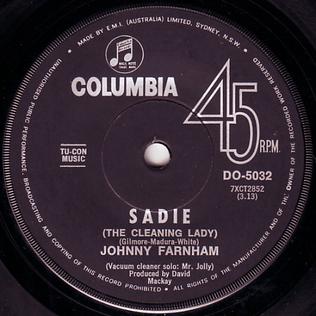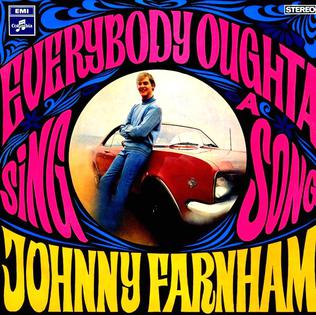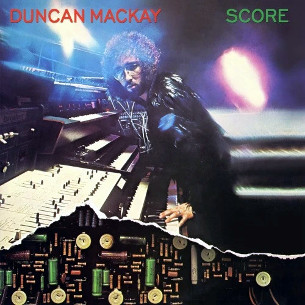
John Peter Farnham is a British-born Australian singer. Farnham was a teen pop idol from 1967 until 1979, billed until then as Johnny Farnham. He has since forged a career as an adult contemporary singer. His career has mostly been as a solo artist, although he replaced Glenn Shorrock as lead singer of Little River Band from 1982 to 1985.
Rock music in Australia, also known as Oz rock, Australian rock, and Aussie rock, has a rich history, rooted in an appreciation of various rock genres originating in the United States and Britain, and to a lesser extent, in continental Europe and Africa. Australian rock has also contributed to the development of some of these genres, as well as having its own unique Australiana sound with pub rock and its Indigenous music.
Peter William Dawkins was a New Zealand record producer and musician, best known for his late-1960s to mid-1970s New Zealand hits and his 1970s productions for Australian-based pop artists, including Dragon, Australian Crawl and Air Supply. He won multiple production awards, including the Countdown Producer of the Year. In the late 1980s, he developed Parkinson's disease.
Glenn Dawson Wheatley was an Australian musician, talent manager, tour promoter and radio entrepreneur. Wheatley was the founder and managing director of Talentworks.

Festival Records, later known as Festival Mushroom Records, was an Australian recording and publishing company founded in Sydney, Australia, in 1952 and operated until 2005.

"Sadie (The Cleaning Lady)" was Australian pop singer Johnny Farnham's first solo single. The novelty song was released in November 1967 and was No. 1 on the Go-Set National Singles Charts for five weeks in early 1968 (six weeks on the Australian charts in 1968 based on the Kent Music Report). It was the largest-selling single in Australia by an Australian artist in the 1960s.
Mark Opitz is an Australian record producer and audio engineer. He started his career with Australian Broadcasting Corporation (ABC) in 1971. He has produced AC/DC, the Angels, Australian Crawl, Cold Chisel, Divinyls and INXS. He has won the ARIA Award for Producer of the Year in 1987 and 1988. He had previously won Best Australian Producer at the Countdown Awards for his work in 1980, 1982, 1985 and 1986. On 8 June 2020 he was appointed a Member of the Order of Australia (AM) for "significant service to the performing arts, particularly to music production." In August of that year he was listed as one of The 7 Most Influential Music Producers of All Time by Mixdown Magazine's David Tomisch and Will Brewster.

An audio engineer helps to produce a recording or a live performance, balancing and adjusting sound sources using equalization, dynamics processing and audio effects, mixing, reproduction, and reinforcement of sound. Audio engineers work on the "technical aspect of recording—the placing of microphones, pre-amp knobs, the setting of levels. The physical recording of any project is done by an engineer…"
David Mackay is an Australian record producer, arranger and musical director. He began his music career at the age of 15 in a production of Bye Bye Birdie for J. C. Williamson Theatre Company. He also worked for a time recording musical sessions for local radio.
John L Sayers was a New Zealand-born Australian recording engineer, producer, and studio designer. Initially associated with Armstrong's Studios in Melbourne, he was later the owner of John Sayers Productions. He designed a great number of studios, both in Australia and abroad.

Everybody Oughta Sing A Song is the second solo studio album by Australian pop singer John Farnham and was released on EMI Records in November 1968. Its first single, released in July, was the double A-sided, "Jamie"/"I Don't Want To Love You", which peaked at No. 8 on the Go-Set National Singles Charts. The second single, "Rose Coloured Glasses" was released in October and peaked at No. 16. Writers on the album included Hans Poulsen, Neil Diamond and Quincy Jones. The album was re-released in 1974 with a different cover, it shows Farnham performing live on stage, whereas the initial 1968 release had him leaning against a Holden Monaro.
Howard Gable is a New Zealand-born Australian record producer who is best known for his work as an A&R manager and house producer for EMI's Columbia pop label in Australia in the late 1960s and early 1970. He was also for some years married to New Zealand born pop/country singer and former Australian 'Queen of Pop' Allison Durbin.
The Masters Apprentices are an Australian rock band fronted by Jim Keays on lead vocals, which originally formed as The Mustangs in 1964 in Adelaide, South Australia, relocated to Melbourne, Victoria, in February 1967 and attempted to break into the United Kingdom market from 1970 before disbanding in 1972. Their popular Australian singles are "Undecided", "Living in a Child's Dream", "5:10 Man", "Think About Tomorrow Today", "Turn Up Your Radio" and "Because I Love You". The band launched the career of bass guitarist Glenn Wheatley, who later became a music industry entrepreneur and an artist talent manager for both Little River Band and John Farnham.
Roger Savage is a British-born Australian sound engineer of music and film.He engineered some of the most important Australian popular music recordings of the 1960s, and worked on many acclaimed films from the 1980s onwards. He was nominated for an Oscar for his work on Moulin Rouge! in 2002.
Paul McKercher is an Australian record producer, audio engineer, sound mixer and multi-instrumentalist. He has received five ARIA Artisan Awards and has produced over 50 albums. McKercher has worked with Australian artists Josh Pyke, Bertie Blackman, Papa vs Pretty, Sarah Blasko, You Am I, Pete Murray, Motor Ace and Eskimo Joe. An avowed analogue fan, he specialises in the use of tape, although he also uses digital technologies.

True Romantic – The Best of Kate Ceberano is a greatest hits album released by Australian recording artist Kate Ceberano. It was a commercial success, peaking at number 9 on the Australian Recording Industry Association (ARIA) album chart, and was certified platinum in Australia. The album was re-released in 2004, under the title The Definitive Collection.
Independent record labels proliferated in Australia during the 1960s. The local branch of the British-owned EMI company had dominated the Australian record market since the 1920s, but in this period it faced increasing challenges from its rivals, including the Australian arm of the American CBS Records and particularly from the Sydney-based Festival Records, a division of Rupert Murdoch's News Limited.
Ronald Stewart Tudor MBE was an Australian music producer, engineer, label owner and record industry executive. He started his career with W&G Records in 1956 as a sales representative; he became their in-house producer and A&R agent before leaving in 1966.

Score is the second studio album from the British keyboardist Duncan Mackay, which was released by EMI in 1977.
Bill Armstrong AM is an Australian music producer.






